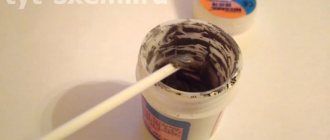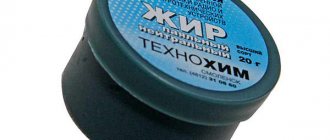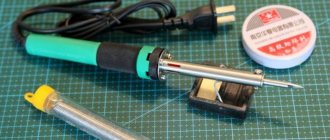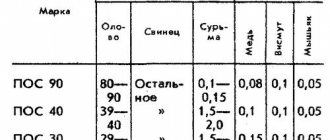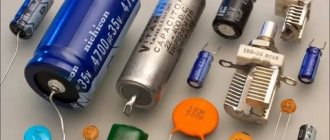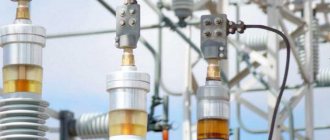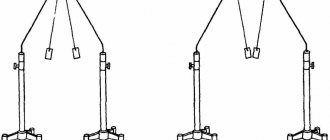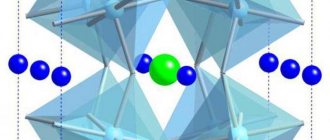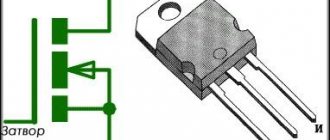Whatever innovations the modern market of tools for radio repair offers, soldering iron remains one of the most reliable and safe devices.
The process of soldering wires and microcircuits is considered effective because it allows you to achieve the strongest possible connection between wires and small parts.
This result can be achieved by adding a special material to the contact area - solder, which has a lower melting point than that of the parts being connected.
Thus, soldering with a soldering iron is the effect of a certain temperature on different metal surfaces for their strong and high-quality connection. However, before you start working with a soldering iron, you should first understand the rules of soldering and other intricacies of this process.
What is rosin
Rosin (full name colophon resin) is a glassy solid similar to amber, which is obtained from the resins of coniferous trees purified in a special way.
It is absolutely insoluble in water, but easily soluble in alcohol, acetone, and gasoline. In addition to the main name, words are added to it by which you can understand how it was obtained: pine (harpius), tallow, extraction, etc. The softening and melting temperature of rosin (from 50 to 130 °C) depends on the method of production, raw materials and chemical additives in the composition.
Rosin got its name from the ancient city of Kolophon, where “resin for bows” was produced and sold in large quantities. There was no talk of using rosin for soldering; at that time there was neither such a process nor parts requiring such a connection. Rosin was actively used in a variety of everyday situations. It was used to lubricate bow arrows and musical instrument bows. They filled the gaps between the boards and impregnated the hulls of ships, and used them in the manufacture of lubricants.
Properties
Knowing the properties of the material for soldering, you can accurately determine under what conditions it is used:
- Does not wash off with plain water. To remove rosin residues, you need to use gasoline, alcohol-containing compounds or acetone.
- The softening temperature of the resinous material starts at 50 degrees. In rare formulations, this parameter can start from 130 degrees Celsius.
- The main component of rosin is abietic acid. This resin substance occupies 90% of the total composition.
- Boiling point - from 250 degrees.
- A brittle material that is easily destroyed by impact or strong movement.
By the color of rosin you can determine the quality of the finished material. If the shade is bright and saturated, the cleaning was not carried out according to the rules and foreign impurities remained in the composition. They have a detrimental effect on the properties and characteristics of rosin. The high-quality composition has a lemon tint.
Methods of obtaining
Resin on wood
There are three methods for obtaining rosin:
- Extraction. The wood is crushed and soaked in a solvent. This way the resin extract is released.
- Distillation of tall oil. This oil is a waste product generated during paper production.
- The most common method is to obtain rosin from resin. Softwood sap is processed using uniform heating. During the thermal process, moisture and turpentine will evaporate. Solid pieces of rosin remain in the container. Then they undergo a chemical cleaning process and go on sale.
Depending on the method of obtaining the finished material, its name also changes.
Rosin solubility
Ready-made rosin dissolves well in most chemically active solvents. This list includes gasoline, ether, acetone, and alcohols. At the same time, solid rosin does not react in any way to water.
Melting temperature
Rosin is excellent for soldering due to its low melting point. The exact value of a particular grade depends on the source and method of its preparation, but average figures indicate a range of 50-70 degrees. The indicator may be higher, but it does not exceed the melting point of any solder.
Main purpose of application
Most conductors are susceptible to oxidation, and fatty particles are quickly deposited on their surface. This greatly complicates the soldering process and degrades the quality of the connection. Being a chemically active acidic substance, rosin, when heated, cleans the surface of oxide film and foreign substances.
Composition of rosin
How does rosin work? It has excellent activity when adding chemicals.
Esters from rosin
This is possible due to the fact that it contains rosin acid, which makes it possible for its widespread use. It is widely used to obtain a wide variety of derivatives. We are talking about resinates, substances such as ether, condensate products, and so on. They are called prepared resins. They can be characterized from a chemical point of view as a series of compounds formed during the interaction of resin acid and other substances that are included in the product in question.
Here's how to make one of the substances in rosin, which is used in the paint and varnish industry. To do this, it is necessary to melt the rosin to two hundred or even two hundred and ten degrees Celsius, which is placed in an esterifier. A reduced pressure is created there. Glycerin is gradually introduced into the mass. The main thing is to keep the proportion correctly.
That is, you need to use one hundred parts of rosin for every ten or twelve parts of glycerin. The temperature should be raised to two hundred and eighty degrees. Such a high temperature should last up to one and a half or even two hours. While the mass is infusing. After this, it is raised even higher, to three hundred and five degrees, to get rid of glycerin. This is how this type of rosin is obtained.
But it is important to remember that heating to three hundred and five degrees is labor-intensive, because it causes an increase in essential oils containing acid, since its disintegration is possible, at least incompletely.
Where else can resin be used?
This resin is used not only as a flux for soldering. It is also used for many other purposes:
- in the production of various varnishes and paints;
- as one of the materials used in the manufacture of plastics;
- when processing strings and bows for musical instruments;
- for rubbing the soles of ballet shoes;
- to create a smoke screen effect and other effects in the film industry.
What it is
Rosin got its name from the ancient Greek city of Colophon, where at one time musicians used a special resin to make musical instruments. Rosin is a resin that is partially contained in pine resin. To obtain the desired substance, 25% of the substances (turpentine and other volatile components) were evaporated from the resin.
What does the substance look like?
According to the standard, rosin is used for soldering, since the substance is a binder when bonding mechanical damage to metal boards, wires and transitions. Due to its rich chemical composition and physical properties, rosin has other uses.
Varieties
Pine rosin can be divided into three types depending on its production. This changes the properties and characteristics of the soldering material:
- Zhivichnaya. The juice is extracted from the trees, from which crude rosin is released through heat treatment. Cleaned with chemicals. In the production of this type of material, pine sap is used. This makes rosin cheaper. The finished composition does not contain fatty acids.
- Talovaya. The starting material for producing melted rosin is sulfate soap. It is released during the paper production process. The highest category varieties resemble gum rosin in composition and properties.
- Extraction. This material is isolated using a solvent containing crushed wood. Visually darker than other varieties of rosin. The composition contains about 12% fatty acids. The material softens at a temperature of 58–60 degrees Celsius. To improve the characteristics of the extraction rosin, a chemical clarification process is carried out.
Depending on the type of material, the price also changes. Gum rosin is considered the best among other soldering compounds.
Methods of obtaining
Soldering flux is obtained from pine sap . Rosin can be obtained from other coniferous trees, but it will contain more impurities. Pine resin is cleaned by heating water and turpentine out of it. The result is a solid, irregularly shaped pieces. Rosin of the Zhivitsa variety is the purest and does not contain fatty acids.
Gasoline is used to make Extraction Rosin. The resin is dissolved in it, then the composition is filtered to remove impurities. After this, the solvent is evaporated. The result is orange or light brown rosin. It is inferior in quality to Zhivitsa, since its acid number is higher.
When making sulfate soap, a by-product is released - tallow rosin . Its composition depends on the materials used and processing technology.
What is rosin used for?
Not many people know why rosin is used for soldering. To answer this question, you need to understand that this is a resinous substance that is a flux. When connecting parts with a soldering iron, an oxide film forms on the surface being processed. It prevents the solder from joining the parts. To remove this film, you need to use flux or rosin. The resinous substance effectively copes with this task at temperatures above 150 degrees.
Rosin is used in soldering to improve connection parameters. It will help cope with problems associated with insufficient solder fluidity. It can slowly fill the joint and reduce the strength of the joint. The resinous substance is used mainly for home renovation work. The production uses serious compounds with enhanced characteristics and properties.
Resin can be used not only for soldering radio components and wires. Varnishes and paints are made on its basis. It is one of the components in the manufacture of plastics. It is used to process strings on musical instruments. In the film industry, rosin is used to create effects.
How to use it correctly
To make high-quality soldering and get good contact, you need to use the substance correctly:
- Organize good lighting of the workplace. This will help connect fault locations more accurately.
- Places of rupture or fracture must first be cleaned. The procedure can be carried out using sandpaper or special solvents if it is rust.
- It is necessary to tinning the soldering iron. To do this, apply a little rosin to the hot tip of the tool. Simply press the tip of the soldering iron onto the piece of resin.
- After tinning, you need to immediately connect the parts. Additionally, you can perform tinning again.
Additional Information! To simplify the soldering process, you need to clear the workplace of foreign objects, and especially small particles and dust.
The soldering principle is completely simple. Flux, that is, rosin, serves as a connecting substance. Even a beginner can cope with the task. The main thing is to do everything carefully and in a timely manner.
Soldering
Advantages and disadvantages
Rosin for soldering has strengths and weaknesses. Advantages:
- Does not conduct electricity.
- It is an accessible and inexpensive material for soldering. This is due to the fact that the materials for making rosin are distributed all over the world.
- Effectively removes oxide film from the surface of the processed material.
- It does not dissolve in water and therefore the liquid cannot wash away the resinous layer.
- Retains its characteristics at negative temperatures.
- Safe for the human body. The resinous material does not emit harmful fumes and does not require the use of additional protective equipment.
Flaws:
- For a resin-based composition to show its effectiveness, you must be able to work with it. It is recommended to practice on non-working parts or mechanisms.
- Rosin is not effective when working with large parts.
- A fragile material that must be transported and stored carefully.
Safe for the human body
Types of soldering rosin
Rosin is sold in a diluted and pure form. Purified raw materials exist in the form of sticks or pieces. Liquid type fluxes are more expensive and difficult to produce. The simplest version is alcohol-containing, consisting of a solution of rosin and alcohol, diluted in almost equal proportions. This solution does not cause reactions when used, prevents corrosion and does not conduct electric current.
Gum rosin according to GOST 19113-84
Making an alcohol solution can be done at home. It is important to follow the sequence of actions:
- Ethyl alcohol is required in small quantities, with a strength of at least 70°. You can find it in a pharmacy or places where similar products are sold.
- Gum rosin is crushed to a sandy state with a mortar, after which alcohol must be added in a ratio of 70 to 30.
- If you don’t have alcohol on hand, you can use a similar solvent, such as gasoline or acetone. It is necessary to add the softened substance in small portions, stirring until completely dissolved.
A more modern model of the solution has glycerin instead of alcohol. Preparation takes place in the same way; this material is more convenient to use. It can be directly applied to parts to be soldered and has a more solid form relative to the solution. Some solders are sold with ready-made flux in the middle of the wire. The option is convenient for operation, however, the high price and absence in small retail outlets can lead to the exploitation of tallow rosin.
Obtaining liquid rosin
Pine rosin has the following characteristics:
- The boiling point starts at 250 °C, depending on the composition and added impurities.
- Softening occurs at the threshold of 52-72 °C.
- Thermal conductivity of the element is 0.1 kcal/m, calorific value is 9100 kcal/kg.
- Expansion in the molten state is equal to a coefficient of 0.05, acid number from 145 to 175.
The main type of material is transparent colophon resin, applied in a solid state, and has a light yellow tint. The basis for high-quality production of products is abietic acid, which occupies a large share in the composition of the substance.
Making at home
You can make rosin yourself. The resin of all coniferous trees is suitable, but it is better to take pine. You can take a walk through the coniferous forest, taking with you a container for resin, a scraper, a spoon or a knife.
Only trees that have reached 30 cm in diameter are suitable for resin extraction. It is known that an adult pine tree produces no more than two liters of resin per year. Scientists have proven that resin is not a juice necessary for the normal functioning of a plant, but a means for healing its wounds.
A sufficient amount of resin can be obtained at logging sites, where it appears on cut trees and stumps, or it can be sent to a sawmill. Resin often appears on fresh lumber. The resin should be scraped with a scraper or spoon into a metal pot or jar.
The container filled with resin must be placed on fire. It makes sense to carry out this procedure outdoors since the resin will melt and boil when heated, releasing turpentine vapor. The contents of the pot must be stirred periodically to remove foam and debris. The resin must be heated until it stops boiling and the release of vapors stops.
After the boiling stops, a thick transparent mass of a characteristic yellow color, similar to amber, will remain in the pot. It needs to be poured into molds and allowed to cool. It is better to make forms from cardboard or stiff paper. You can also use plastic containers, but it’s easier to get ready-made rosin from cardboard containers. If inclusions of debris are visible in the resulting rosin, it can be filtered through a fine metal mesh.
Benefits of using rosin
The obvious advantages of using this substance for soldering include the following.
- Rosin is a dielectric and has excellent insulating properties.
- It can be easily purchased. Rosin is an affordable material sold in any store that has a hardware department.
- Budget price compared to other materials used as a flux for soldering.
- The ability to carry out soldering with its help even at low air temperatures.
- It can be used both when working in a home workshop and on an industrial scale.
- Rosin is not exposed to moisture since it does not dissolve in water.
- Has a relatively long shelf life.
- Degreases parts and removes oxide films from them.
- Rosin can be used without additional protection.
- This material is non-toxic and can be used without the use of additional protective equipment.
How to use?
Despite its apparent simplicity, it is important to know how to use a soldering iron correctly. The entire soldering process using any type of rosin as a flux can be generally represented as follows:
- thorough cleaning of the soldered surfaces (mechanical), if we are talking about circuits, then it is necessary to remove particles of debris and dust from the board;
- heating up the soldering iron;
- warming up the soldering area;
- treating the soldering iron tip with flux (rosin);
- treatment of joined surfaces with rosin;
- tinning with solder;
- the connection itself and covering the joint with solder;
- cooling of the solder joint.
Experienced specialists strongly recommend paying attention to several important points.
- Rosin, taking into account its characteristics, has the ability, by dissolving oxide films, to partially restore the latter to the state of metal. This function is relevant if there is significant contamination of the surfaces being joined.
- Despite the fact that the softening temperature of the described flux is 55-70 degrees, it is recommended to heat it to 100-130 degrees.
- The need and degree of heating of the surfaces to be soldered is determined primarily by their size. When connecting wires of small cross-section or when installing circuits, you can safely skip this step. However, it is worth considering that on a cold surface, rosin and solder will cool very quickly. As a result, it will be difficult to achieve the dissolution of oxides and the necessary spreading of the metal.
- When using a soldering iron for the first time or rarely, before starting work, it would be useful to go over its tip with a wire brush or fine sandpaper. However, such measures will be relevant in the most extreme, advanced cases. Most often, it is enough to simply warm up the tool well, carefully treat the tip with rosin and cover it with solder (tin it). After a short break in work, tinning the tip will not be necessary. You can simply dip it in rosin and start soldering.
- Particular attention should be paid to surface preparation. During the preheating process, if necessary, it is important to take into account both the dimensions of the elements being connected and the dimensions of the soldering iron tip. First, the surfaces must be rigidly fixed in the position in which they will be soldered. Then, if necessary, they are heated and coated with rosin. The next step is the actual application of molten solder and installation. Afterwards, it remains to cool the soldering area and wash off the remaining flux.
Separately, it makes sense to consider the use of solder with rosin. We are talking about rods wound into small coils. They are thin tin-lead tubes containing rosin inside. During the soldering process, such rods are used as filler material. At the initial stage, the elements to be connected are heated with a soldering iron, and then a solder tube with rosin is inserted into the soldering zone. The seam is tinned by simultaneous movements of the additive and the soldering iron. The joint is evenly coated with melting solder simultaneously with flux, which in itself significantly speeds up and simplifies the entire process.
This method is relevant in cases where there is no need for pre-processing of the parts to be joined. When performing the described work, you should always remember safety precautions. It is important to consider that the soldering process is inevitably associated with several harmful factors. One of the key points in this case is potentially dangerous fumes (rosin smoke, tin and lead fumes).
Also, if flux gets on your skin, it is recommended to immediately shake it off or wash it off.
Tallow
This type of rosin can be called a by-product. The fact is that we are talking about waste from sulfate-cellulose production. The raw material for obtaining this type of soldering flux is sulfate soap. At the same time, several are distinguished, taking into account the characteristics and properties of the material. By the way, the highest of them in its performance indicators is very similar to gum rosin.
Extraction
This type of rosin is obtained by extraction using, as a rule, gasoline and softwood. It differs from gum in its darker shade and lower softening point. The latter varies in the range from 52 to 58 degrees. The acid number of extraction flux for soldering is about 15 with a fatty acid content of up to 12%.
It is important to consider that after chemical clarification, the properties of extraction rosin are as close as possible to those of gum.
Zhivichnaya
The name of this variety of rosin appeared taking into account the raw materials for its production. We are talking about the sap (resin) of coniferous trees. In the vast majority of cases, pine is used as the starting material. This is largely due to its availability. The main distinguishing feature of gum flux is the absence of fatty acids in it.
Secrets of soldering with rosin
There is no difficulty in soldering work, but, as in any type of work, it is necessary to master the basics and carry out a series of training solderings.
If you have never worked with a soldering iron before, try soldering copper wires using ordinary solder and rosin.
Video:
Free access to parts from all sides, the ability to combine them quite tightly are good conditions for developing soldering skills, and using rosin separately will teach you how to dose the required amount.
Please note the following points:
- The cleanliness of contacts for tinning before soldering must be ensured properly, this is the price of strong soldering. After cleaning the surfaces to be joined with a knife, go over them with sandpaper. The goal is to make the metal surfaces of parts brighter, and therefore free of copper oxidizing agents;
- Prepare as much surface as you need for soldering with rosin. If the first time you managed to tin a larger surface than required, redo it by taking new wires;
- If there is not enough solder or flux, leave the soldering to harden. When you try to rub hot compound over a surface, you break the solder joint, which will cause cracks. It is better to wait until it cools completely and solder the remaining surfaces using a new composition.
We looked at how to work with a soldering iron correctly, for what you can and should use fluxes and rosin, highlighted several points that will help you learn to solder better, and showed video instructions for working with a soldering iron.
Now you can easily master soldering with rosin at home.
How can I replace rosin for soldering?
There are situations in which you need to solder parts, but there is no rosin at hand. In such cases, you can replace rosin with the following substances:
Aspirin
You can replace rosin-based flux with acid-based flux. Take regular aspirin from the medicine cabinet (effervescent is not suitable), or, as it is also called, acetylsalicylic acid, and use a tablet of this drug to solder the necessary parts. The tablet can be crushed, this powder can be dissolved in alcohol or water, and the highest concentration of acid can be produced.
Use the solution as a liquid composition for treating surfaces; you can also use a dry tablet as a solid flux for soldering. It is necessary to take into account that when using aspirin, acrid smoke with a strong unpleasant odor is released, so the room in which the work is carried out must be well ventilated.
Soldering fat
You can also use soldering oil instead of rosin-based flux. It spreads very well, covering the entire surface. Using solder fat it is easy to connect the necessary contacts. Only after soldering it is necessary to wash the joint with alcohol to remove any remaining grease. If this is not done, corrosion may develop in the future. Also, when carrying out work, you need to ventilate the room; heating the solder fat provokes the release of a specific odor.
Resin
For soldering products, you can use ordinary coniferous tree resin. The soldering process is the same as using solid flux. The resin melts well. It is not aggressive, so when using resin as a flux, additional protective measures do not need to be applied.
Amber
For soldering, instead of rosin, you can use amber; it has similar characteristics to it and will be a better replacement. But it makes sense to use it only in cases of absolute necessity, since amber is quite an expensive material and therefore it is better to consider other options for replacement.
Rosin for musical instruments
Rosin for musical instruments is a good alternative. But you need to take into account that this type is much more expensive than ordinary rosin for soldering.
All analogues can replace rosin, as they have similar properties. But, before using them, it is necessary to study the characteristics of each material and the nuances of its use in soldering.
Where else can resin be used?
Using tree resin as an additive to paints speeds up their drying . In electrical engineering you can find cables covered with paper impregnated with resins. The low dielectric constant of rosin allows it to be used for impregnation and creation of an insulating layer between high voltage wires.
The car has several components that can be repaired by soldering; the radiator especially often needs to be repaired, eliminating leaks.
Rosin is inserted into the fire fuse. It melts when the heating temperature of the device increases, breaking the circuit and protecting the equipment from overheating.
Familiar with the natural product and bowed instrument. Before each concert, musicians rub their bow with rosin. Rubbing gives the surface the ability to cause small vibrations as it slides along the string. The sound is deeper and richer. At home, you can stick a pin into a tree and tie a thread to it. It is enough to pass a piece of resin along a stretched thread and the pin will “sing.”
Head of the radio and electronic equipment repair department Serdyukov I.P.: “Rosin is added to the compositions of fluxes made from mineral oils and other substances intended for soldering copper and bronze. It weakens the anti-corrosion reaction and the oxide film is removed faster at temperatures below 450⁰. At home, you can prepare flux for copper by grinding rosin into powder, mixing it with petroleum jelly, and dissolving it in a steam bath. You can weld with pure resin by dipping a soldering iron in it.”
How to solder with a soldering iron with rosin: 2 methods of using flux
In principle, the soldering technology in all cases has common features. The differences lie in the features of flux application.
Before soldering begins, it is necessary to prepare the workplace, tools and materials to be joined. Always pay attention to the cleanliness of the soldering iron tip and prevent the formation of carbon deposits and soot on it.
3 tips for dealing with carbon deposits and soot
If you do not consider expensive soldering stations, now you can find two types of soldering irons:
- old Soviet type with a copper tip;
- modern with Weller tip made of nickel coating.
If handled incorrectly, carbon deposits can form on anyone. However, in the first case, it is enough to take a file or needle file with a fine notch and simply strip the copper metal with it to a clean layer. When the tip is removable, it is better to lightly forge it on an anvil: the surface layer will become denser.
Then they begin to heat up such a soldering iron, but before bringing it to operating temperature, lightly lubricate it with rosin and, while it warms up, move it over the solder to tin it well.
In the second case, they act differently, because mechanical cleaning, even with a knife blade, can damage the outer surface of the nickel coating. Microcracks will begin to form in it, and the process of dissolution of the sting core will begin.
The safest method in this case is different: the contaminated soldering iron tip is heated to a high temperature of about 450÷480 degrees for about five minutes. During this time, all the carbon deposits will simply burn off. Then it is allowed to cool at a temperature of 280°.
After this, you need to take an ordinary cellulose pencil, which is used to clean the sole of irons, and dip the tip into it, followed by processing in a special activator. If it is not there, then simply treat it with a soldering sponge. The latter should be saturated not with ordinary water, but with a water glycerin mixture with a ratio of 7/3, where 7 parts are allocated to glycerin.
Cleanliness of the soldering iron tip is the first necessary condition for ensuring high-quality soldering.
Here it is important to choose the right soldering iron in terms of power, because each type is designed for connecting metals of different volumes and dimensions. Please note:
- Powerful models are good at creating high heating of the parts being connected, but they easily burn out small-sized electronic parts and board traces.
- Low-voltage soldering irons are used for precision soldering of low-power transistors and microcircuits, but they cannot properly heat the wires.
I give preference to transformer soldering irons: apparently the force of habit and the need to work in different places have an effect. Since Soviet times I have been using a factory Moment soldering iron.
Even, based on the method of simple calculation of the transformer, I made a more powerful analogue of 100 watts.
It is a little heavy, but for soldering 2.5 square wires it is ideal, and I make the thin copper tips that burn out myself. An electrician always has such source material at hand.
The tip heats up quickly. It is regulated by the duration of activation of the button on the handle, allowing you to control the process visually by the formation of smoke from the rosin.
In most cases, the home craftsman is helped out by soldering iron tip temperature regulators, which you can make yourself from available parts or purchase in a store.
I often began to observe that many radio amateurs began to use simple dimmers designed to regulate lighting.
They just select them according to the load and limit the output voltage in the range from 150 to 220 volts.
In all cases of soldering, it is necessary to take care not only of the cleanliness of the soldering iron tip, but not to forget about the quality of the surface of the parts being connected. Mineral and organic contaminants and moisture must be removed, and after cleaning, future contact connections must be tinned separately.
Features of soldering with solid flux
This option is considered as a classic soldering scheme. It can be presented in five steps.
Step #1. Preparatory stage.
Whatever the rush, always start with equipping the workplace, ensuring safety rules and preparing tools. Consider in advance the permanent fixation of wires and connected parts.
Remember that a wire fixed on one side acts like a spring and can, if accidentally pressed on the end with a soldering iron, throw molten solder into the eye. Wear safety glasses and do not solder overhead.
It is convenient to keep solid rosin in a special tin jar, which is shown in the photograph of my Soviet soldering iron. I have already drawn attention to the cleanliness of the tip and soldered surfaces above.
Step #2. Tinning of joined surfaces
The process boils down to covering the stripped copper cores and contact pads with a thin layer of solder.
To do this, start heating the soldering iron and immerse its tip in solid rosin. It melts and wets the tip, further cleaning it. Immediately quickly touch the solder. It turns into a liquid state, and a small droplet is attached to the end of the tip.
It is transferred to the cleaned contact pad, quickly heated with oscillatory movements and the soldering iron is removed to the side. The solder cools and hardens.
If you need to tin the regular end of the wire, you can simply heat it with a soldering iron in a jar of rosin, and then treat it with solder.
The process must be completed quickly, completed in just a couple of seconds. A properly tinned surface is distinguished by the uniform color of pure tin and is covered with an even thin layer.
New electronic parts are usually always tinned at the factory. They do not require additional processing with solder.
Step #3. Fixing parts
The elements to be soldered must be clearly connected and securely fixed to prevent their accidental displacement. For this purpose, use small vices, tweezers, and needle-nose pliers.
It is convenient to use a special device called the “third hand”.
There are many options for its factory design and home-made designs.
Step #4. Direct soldering
The prepared parts are connected and heated with a soldering iron with a drop of solder, and then quickly removed, providing natural cooling.
We work quickly, remember the two-second rule.
Step #5. Quality check and final operations
The created joint must be visually inspected and the connection of parts checked for mechanical strength by lightly tugging. The surface of the solidified solder should not have roughness or pores.
At this stage, many workers consider the process completed, which is wrong. It is necessary to remove traces of remaining flux from surfaces and paths.
The fact is that rosin, being a good dielectric, is hygroscopic. Moisture absorbed by it violates the insulating properties. As a result, leakage currents are possible in critical areas of microcircuits and small-sized electronic boards. They will lead to malfunctions of microprocessor devices.
And the appearance of the soldered area will change, it will become more neat, and traces of repair will be hidden.
Remove flux residues from the tracks with alcohol. It dissolves any stains that have arisen, after which the treated area is wiped with a dry, clean cloth.
On sale you can find tubular solder in the form of rods with rosin, located in the internal cavities. This material reduces soldering time and is convenient to use.
How to solder with dissolved and gel rosin
The technological process practically repeats the previous method. Only it uses liquid flux, which dictates the following features:
- An alcohol solution or rosin gel is initially used to cover the cleaned contact pads for tinning.
- They are treated with a heated soldering iron with a drop of solder, ensuring a uniform thin coating.
The tinned parts are firmly connected and soldered as described above.
A simple explanation of soldering technology from a scientific point of view: what fluxes do
Soldering is usually understood as a technological process of permanently connecting various parts by introducing between them another metal with a lower melting point (solder) than that of the elements being connected.
In this case, the connection is created due to the formation of interatomic bonds between materials when they are heated to less than their own melting temperature. Liquid hot solder flows into the gaps between the parts, fills them, and with further cooling it crystallizes and sets firmly.
Solder in a liquid state interacts with the base metal. As a result, transient processes are created between them, forming solid solutions and intermetalloids.
They ensure adhesion (sticking) of the parts being connected. You need to know that the quality and strength of the contact created is influenced by its size. A thick layer of intermetalloids is highly brittle and easily destroyed.
Adhesion is also greatly influenced by the cleanliness of the solder surfaces and the parts being joined. Dirt, corrosion, mineral impurities, oils, and fats do not allow the parts to be properly connected.
Therefore, before soldering, they are cleaned in various ways, and when applying solder, fluxes are used - chemical substances or mixtures thereof that can remove layers of oxides from the surfaces of the parts being soldered. Moreover, they additionally:
- reduce the surface tension of the molten solder;
- improve its spreading over the formed gaps;
- protect from the influence of the external environment, preventing the formation of oxidative processes.
Rosin is a universal flux, well suited for soldering most metals except steel, cast iron, and aluminum. Due to its versatility, it has long been used in home repairs and small workshops.
However, soldering parts in industrial-scale production requires better adherence to technology and precise selection of flux characteristics. For these reasons, colophon resin is used less frequently, and each technology uses its own specially selected fluxes.
An old proven technique: an exercise for mastering the quality of soldering from experienced
Anyone can test their skills and improve their practical skills. To do this, you will need a soldering iron with a prepared workplace and a piece of copper wire from the electrical wiring.
12 pieces of equal length, about a couple of centimeters, are cut from it. They will serve as the edges of the cube. And it will need to be soldered and tested for strength with a slight compression force in the palm.
Practice this exercise and master proper, high-quality soldering. I hope that my material about rosin: what it is will help you develop this skill well. If you know other ways or have a different opinion from me, then write it in the comments. I recommend watching the video by AlexGyver “How to solder with a soldering iron.”
Esters from rosin
If you wish to obtain an ester that can be completely replaced by the pentaerythritol substance isolated from abietic acid, then four moles of rosin will be required to obtain one mole of pentaerythritol.
This ester, which is called pentaerythritol, dissolves in a common substance that can dissolve varnish. Its softening temperature reaches only ninety-five or even one hundred degrees Celsius. In this case, the number of acidic substances reaches as many as ten or twenty-five. This substance is used to create oil varnishes or enamels. Thanks to it, drying is possible quite quickly, it is also possible to form a hard coating film, resistance to water and atmospheric conditions.
Rosin-maleic product
Consider a product such as rosin-maleic, this adduct is represented by the condensation of rosin, as well as together with maleic anhydride. The temperature in order to melt the adduct must be about one hundred and forty degrees. In this case, the acid number in general reaches one hundred or one hundred and ten substances. This substance is used to form varnish based on alcohol, oil and nitrocellulose coatings.
The rosin-maleic adduct is prepared using esterified glyceride in two steps.
- First, you need to obtain malenic acid based on an incomplete alcohol solution.
- Secondly, a rosin-maleic adduct is obtained, as well as its oil esterification.
Abietic substance is a product that has undergone oxidation, which is obtained from sulfur based on Christmas tree. It is extracted with gasoline. Then everything that remains is treated with butanol. When distillation is done, which is done using an alcohol extract, a resin is obtained. To do this, it is necessary to heat the substance to two hundred ten or two hundred twenty degrees. This process requires two or four hours, and the mass must be blown with air. To soften abietic resin, a temperature of up to ninety-four degrees is needed, the number of acidic substances reaches eighty-one, and saponification reaches one hundred and forty-five. This substance is used to form nitro varnish.
As you can see, rosin derivatives are used for the production of paints and varnishes. It consists of resin acid and fatty acid. As we have already noted, abietic and pimaric acid are isolated.
In addition to gum and extraction rosin, tallow substance is obtained. It is obtained from tall oil. It is a waste product from the paper or pulp industry.
Rosin readiness
How to determine if a product is ready for use?
Factors determining the readiness of rosin:
- color,
- transmission of sunlight on a drop of rosin resin, which is placed on glass,
- number of acid derivative.
In order to speed up the process of isolating the product in question, the rate of its precipitation should be increased. Catalysts are used for this. This is usually zinc metal in small doses, but oxidized calcium can also be used. The oil is distilled off in a vacuum. The resulting substance is rosin, which consists only of resin acid triglycerides.
For the production of enamels, oil varnishes, nitrovarnishes, harpius ether is used, which is used in the production of semi-finished products of the listed building material.
You can also get pentaerythritol ether isolated from rosin. In this case, exactly the substance that is similar to glycerin is obtained. This ether is released only at lower temperatures. About two hundred sixty or even two hundred seventy degrees Celsius is required.
Obtaining rosin
Drying oil is often used in construction. Oddly enough, it was made from rosin. Since oil, made on the basis of resin and salt, is used specifically for this type of building material. You can also produce ointment for wheels and other substances for various purposes.
Gum product
Let's look at how the gum product is obtained. It is necessary to heat resin, which is delivered from the place of its extraction, that is, directly from a coniferous forest, to eighty-five or even ninety-five degrees Celsius. Then it goes into the sump, where the water drains, and up to ninety-eight percent of it comes out, along with various kinds of impurities. After this, table salt should be added to the sump. Then the water settles even better. To make the resin lighter, calcium salt and phosphoric acid should be added.
When the resin has already settled, after some time, it should be submitted to the assurance column. There it and the turpentine are separated into their components, and the water comes out completely. This is how you get pure rosin.
Still hot, it is poured into a wooden container. Usually these are barrels. There it is given time to harden. And they use it as a solid, glassy mass.
It is also important to note that when rosin is stored for a long time, it tends to crystallize.
Soldering process
Depending on what composition was chosen and how the work was carried out, the quality of the seam will depend. Soldering method:
- Initially, the contacts are cleaned.
- Then they need to be tinned.
- After tinning, you need to melt the solder with a soldering iron and stretch it evenly over the joint.
When working with parts, it is necessary to secure them firmly in a vice or clamps to avoid movement during the soldering process.
Rosin for soldering acts as a flux. To use it, you need to choose the right composition and practice on unnecessary elements.
Types of flux
For different applications, rosin is available in pure and diluted form. There are three types of fluxes based on colophon resin: solid, liquid and gel. Liquid and gel-type fluxes are more expensive and difficult to produce.
It is acceptable to use rosin-based fluxes for small-sized components of a certain metal composition. Other types of fluxes are used for processing large compounds, complex alloys, rare metals and on an industrial scale.
- Solid flux is rosin in its pure form. It is the most popular and has both undoubted pros and cons. The main disadvantage is the inconvenience and inaccuracy of application to hard-to-reach solder areas.
- Flux based on an alcohol solution, diluted in equal proportions of alcohol and solid rosin. It is very convenient when applying it with a brush to the surfaces of parts that will be connected by soldering.
- Gel-based rosin flux. The viscous consistency allows you to accurately dose the applied composition and easily process the most difficult areas of the parts to be joined. The gel takes longer to dry compared to an alcohol-based composition. This gives some time for soldering; it is more plastic and pliable compared to solid rosin flux.
Liquid or gel flux is first applied with a brush to the soldering areas and begins to work without simultaneous exposure to temperature.
Soldering methods
Having studied the properties and characteristics of Colophon resin and fluxes made on its basis, you can begin the soldering process. How does it happen?
The soldering process using rosin occurs in several ways.
First way.
- Heat the soldering iron to the required temperature.
- A small amount of low-melting substance used as solder is placed on the tip of the soldering iron. It could be tin, lead, copper, antimony, bismuth, zinc, cadmium.
- Dip the soldering iron tip along with the selected solder into the rosin to collect the resinous substance. It should be taken into account that when the soldering iron is fully heated, a slight smoke should appear.
- As quickly as possible - before the resin evaporates - the necessary parts are soldered.
The method described above requires speed, attention and high precision. To complete it, you need to have certain skills and abilities. Therefore, soldering can be done using rosin and another method.
- The most common ethyl alcohol is used as the basis for the flux.
- Rosin powder is added to the alcohol solution. The suspension is mixed well and left until the rosin is completely dissolved.
- An alcohol solution of colophon resin is applied with a brush to the parts that will be connected by soldering.
- The soldering iron is dipped into the solder and removed only when the soldering iron tip is completely covered with a shiny film.
- Grab a little more molten solder and quickly transfer it to the places of future soldering.
- Distribute the solder evenly over the entire surface - they deserve the place of future soldering.
- In the same way, the required mass of solder is transferred, which is required for strong adhesion at the junction points.
- After the joints have cooled, they are wiped with a damp soft cloth and allowed to dry.
- The resulting joint is processed using a file. You can use fine-grained sandpaper instead.
- Wipe the surface with a dry cloth.
Using these methods, parts are soldered using rosin.
Soldering wires
In order to correctly solder copper wires using rosin, you must follow a certain sequence of actions.
- First prepare the wires . To do this, the ends of the wires that need to be soldered must be thoroughly stripped of insulation. All wires spliced together are usually insulated using a special heat-shrinkable tube. If such a tube is present, then it must be cut using a sharp knife so that the length extends 2-7 mm beyond all seams. The insulating coating should be about two centimeters on each side of the wires being connected. The exposed ends of the wires must be burned to completely remove the insulation.
- Then the connected ends of the wires need to be provided with a high-quality mechanical connection. To do this, the two ends of the wire are twisted together so that their centers intersect tightly with each other. After this, the end of one wire should be twisted along the length of the cable. The same manipulation should be done with the second end of the other wire.
- Then you need to heat up the soldering iron to first tin the wires and then warm them up. To do this, a heated soldering iron is lowered into rosin and a little solder is taken, after which the device is passed a couple of times along the ends of the wire. During tinning, the wire should be rotated and heated, which will help ensure an even coating of rosin.
- At the end of the work, the finished wire should be insulated . To do this, you need to put the heat shrink back on the already soldered wires. This will not only help cover the connection, but also heat it, making the soldered wire strong and flexible.
As you can see, there are no particular difficulties with soldering wires using rosin. The main thing is not to forget to tin the wire and check the quality of the soldering. If necessary, tinning should be repeated several times until the wires are firmly connected with solder.
How to store rosin
To prevent rosin from melting and crystallizing over time, you need to be able to store it properly.
Here are the basic conditions regarding long-term storage of rosin:
- Do not store rosin in a rusty iron container. As a result of this, rust will come into contact with the acids contained in rosin;
- If rosin is added to white spirit, then turpentine is also needed, at least 4%;
- Before long-term storage, it is recommended to filter the rosin solution.
And although today there are new fluxes for soldering, rosin has been incredibly popular since the times of the USSR. It is still in demand today.
Application of rosin
The product in question is used in various types of human activities. For example, it is used to glue paper media. A number of industrial and household products can be manufactured. We are talking about soap, creolin, finishing agent, grease, electrical insulating material, adhesive plasters, for various construction needs. It turns out that the paint and varnish industry uses this product on a large scale. Since the resins that are obtained from it play a big role in human life.
Final preparation of the soldering iron tip. Service.
As you noticed, the copper has turned dark blue, so we take a file and go over the working part of the tip, removing scale from it. Now quickly dip the tip into a jar of rosin and touch the solder to both sides.
Then, using small movements along the bottom of the bath, as if you were working with an eraser, move the tip back and forth, periodically dipping it in rosin for better wetting, until the working part is covered with solder on both sides. Happened! The sting should always be this white
.
Remember! The key to good soldering is a soldering iron tip that is free of oxides and well tinned. The solder should be a thin layer evenly distributed over the entire working surface of the tip
.
Here you go. You have prepared the soldering iron for soldering, and now you can safely start practicing. In the second part of the article, how to properly solder with a soldering iron with rosin, you will learn how to tin and solder conductors together
. Good luck!
Knowledge of how to solder correctly is needed not only by radio amateurs and electrical installation specialists. Every home handyman has to deal with the need for soldering when repairing electrical appliances.
Solder.
solder is used to connect the surfaces of components and parts together.
- an alloy of lead and tin in various proportions.
As a rule, solder is made in the form of a wire or tube filled with flux. It is better to give preference to solder in the form of a wire, since flux will have to be used in any case.
Typically, solders differ in melting point and hardness, and are marked with alphabetic and numerical values, for example, POS-60.
POS - tin-lead solder, digital 60
means the percentage of tin in the alloy, respectively lead 40%. The more lead in the solder, the darker it is and the higher the melting point of the solder. For home use, it is better to purchase POS-60 solder with a melting point of about 190 °C, and also has good strength.
Characteristics of solder and rosin
Next, we’ll figure out how to properly solder wires with a soldering iron with rosin and tin when choosing the required brand of solder. In this case, the PIC marking, the so-called tin-lead solder, is suitable. The marking contains digital values, so 60 is the percentage of tin, and 40% is the lead content. You can find solders on the market that have a high lead content. This material has the best characteristics that ensure high quality work when connecting parts. The composition differs in color, the melting temperature will be an order of magnitude higher than with conventional series and PIC markings, but the quality of the processing site will also be high.
Rosin plays an important role in this process, which allows you to solve not only the problem of how to properly solder wires with a soldering iron, but also helps to achieve the necessary strength of the connection. The main purpose of rosin is to remove oxides from processed soldered parts. The use of rosin is mandatory, since the copper tip, when heated, forms a specific carbon deposit that interferes with the quality of ensuring the strength of the connection of parts on the microcircuit.
Read also: DIY 12V voltage stabilizer for cars
By its nature, rosin is a natural material that contains resin components from coniferous wood, usually pine. The substance has a specific pine smell. There are several varieties of rosin on sale, it is a liquid mass or in a solid state. In addition, in order to know how to properly learn to solder with a soldering iron, a beginner can use a combined version of rosin with the addition of ethyl alcohol, the so-called alcohol-rosin composition.
Rules for soldering with rosin
Now we will move on to the practical part of the problem, how to properly solder wires with a soldering iron with rosin and tin, the process itself. First of all, you need to prepare a minimum set of tools. Before working on how to work with a soldering iron for wires, you need to flatten the tip and clean it properly. If the tip is not flattened, we recommend doing it yourself without damaging the main body of the device. Remember, the thinner the tip, the more effective the result. As a rule, the best and optimal sting option would be a tip at an angle of 30-45 degrees.
Basic rules for soldering with a soldering iron:
- All work must be carried out in a ventilated area, open the windows.
- We plug in the soldering iron, wait until it warms up and the characteristic smell goes away. It is necessary for the sting to be heated.
- Turn off the soldering iron for a while and clean the tip of old dirt.
- We turn on the device again.
- We lightly tin the parts and parts of the parts to be connected. To do this, we wait until the tip warms up to the desired temperature, lightly touch the rosin and direct the tip to the place where the joint is processed.
- To take the required amount of solder, again point the hot tip at the rosin. We apply it to a pine board and repeat the operations again with the remaining parts.
- A beginner needs to experiment at his leisure to understand how to properly solder copper wires with a soldering iron.
- A typical beginner’s mistake is to carry out all connection work with a bare tip, where there is no solder or flux. This fatal mistake can cause the entire chip board to catch fire.
- Next, what is needed for soldering wires with a soldering iron for copper materials. For this technological process, it is enough to have one tinning. First, we warm up the tip, touch the rosin, and then apply the tip to the working surface of the workpiece. After this, we lift the wire again, lower it into rosin, again apply a hot tip and connect the contacts again.
- During the soldering process, the rosin itself will begin to smoke (a natural process). This means that the wire is surrounded by the necessary mass of rosin intended for the job.
- In the process of soldering and completing the task of what kind of soldering iron is needed for soldering wires, pay attention that if the color of the wire changed from yellow to silver, then the whole process was quite successful.
- Now all that remains is to solder the remaining 2 wires, but you need to tin the ends.
What you need to know to ensure soldering safety measures
Like any technological process of working with power tools, it requires safety measures. what power a soldering iron is needed for soldering wires , it is no more than 40 watts, but for beginners it would be best to use a low-power tool; a device up to 20 watts is quite enough. Rosin, like solder, has a negative effect on the mucous membrane of the eyes and respiratory tract. It is imperative to consider ways to ventilate the room. Use a soldering iron that has a grounding system, this way you will ensure complete electrical safety of the work.
Now let's try to figure out what can be soldered with a soldering iron? Yes, almost everything related to metal, and not necessarily radio electronics. Damaged metal buckets and dishes can look attractive again if we get the soldering iron and the required solder group to work effectively. When working, use readily available materials, such as a wooden block, as well as ordinary plumbing tools - pliers, wire cutters, hammers. You just need to try the experiment once on a simple metal object, and then you will have a great desire to eliminate defects on household items made of metal at home. When carrying out any work with a soldering iron, comply with the minimum fire and electrical safety requirements. Use special protection and be sure to ventilate the room where you plan to carry out technological work on joining parts using rosin and solder.
Preparing the soldering iron for use
Before soldering with a soldering iron, you should properly prepare it for work. In everyday life, an electric soldering iron with a copper tip is most often used, which, during storage and use, gradually becomes covered with a layer of oxide and is subject to mechanical damage. To obtain a solder joint of good quality, the soldering iron is prepared for use in the following sequence:
- Using a finely cut file, clean the working part of the tip to a length of 1 cm from the edge. After cleaning, the tool should acquire a reddish color, characteristic of copper, and a metallic luster. During stripping, the tip is given a wedge-shaped, beveled, cone-shaped shape in order to solder what the master needs.
- Plug in the soldering iron and heat it to operating temperature.
- The tip must be tinned and covered with a thin layer of tin - the same solder used to solder the connected conductors. To do this, the tip of the tool is immersed in rosin, and then a piece of solder is passed along it. You should not use a solder rod with rosin inside for tinning a soldering iron. To distribute the solder evenly, rub the working edges against a metal surface.
During operation, the half-plate will burn and wear off, so the soldering iron will have to be cleaned and tinned several times during the soldering process. You can clean the tip with a piece of sandpaper.
If the master uses a tool with a nickel-plated, non-burnable rod, it will have to be cleaned with a special sponge or damp cloth. They tin such a sting in molten rosin, running a piece of solder over it.
Soldering can only be learned on the job, but before that it is advisable to become familiar with the basic operations.
Working with solder
When heated sufficiently, the molten solder should become flowable. For small jobs, you can take a drop of alloy on the tip of the tool and transfer it to the parts to be joined. But it is more convenient to use thin wire (rod) of different sections. Often inside the wire there is a layer of rosin, which helps to solder correctly with a soldering iron without distraction from the process.
With this method, a hot tool heats the surface of the connected conductors or parts. The end of the solder rod is brought to the tip and pushed a little (1-3 mm) under it. The metal instantly melts, after which the remainder of the rod is removed, and the solder is heated with a soldering iron until it acquires a bright shine.
When working with radio components, you need to take into account that heating is dangerous for them. All operations are performed within 1-2 seconds.
When soldering connections of single-core wires of large cross-section, you can use a thick rod. When the tool is heated sufficiently, it also melts quickly, but you can distribute it over the surfaces to be soldered more slowly, trying to fill all the grooves of the twist.
Any novice specialist involved in the maintenance and repair of radio electronics is faced with the need to buy a device designed for high-quality work on connecting damaged sections of the microcircuit. Let's try to figure out how to solder correctly with a soldering iron with rosin, what a novice specialist and a master with a wealth of knowledge needs to know.
We prepare the soldering iron tip for soldering.
And so, you bought a soldering kit. The first step is to prepare the soldering iron, namely its working part ( tip
), since it is not yet very suitable for soldering. We clamp it with pliers, take a file, and begin to carefully process the tip, giving it the shape of a dihedral angle of approximately 30...45 degrees.
You have prepared the tip of the tip, but you cannot turn on the soldering iron yet, because when you turn it on for the first time, it emits smoke and an unpleasant odor, this is normal. This happens because during the first heating, the adhesive layer with which the mica sheets were glued together when winding the heating element burns out.
